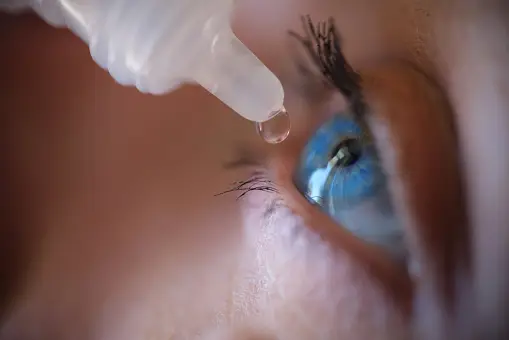Our Location
Islamabad, Pakistan
Before knowing 5 strange facts about crying, read these introductive lines to well understand. Tears are released while someone is crying, which is a normal, emotional reaction that is occasionally accompanied by facial expressions and sounds. People can use it to communicate a variety of feelings, such as empathy, happiness, grief, irritation, and relief. Tears are a physiological discharge of numerous substances that support communication and emotional health. We all cry sometimes, and the meaning of crying changes depending on the culture and situation.
Trimble currently states, “We don’t know anything about people who don’t cry.”
There are a lot of things about crying that scientists don’t know or can’t agree upon. Emotional tears are still one of the most puzzling mysteries of the human body over 150 years after Charles Darwin deemed them “purposeless.” The only animals whose tears may be induced by their emotions are humans, even if several other species cry out of response out of pain or annoyance.
Tears falling or welling up in the eyes as a reaction to an emotional state or suffering is called crying. Crying can result from a range of emotions, including happiness, enthusiasm, rage, and sadness.
Tears play a vital and evident part in newborns’ requests for adult attention and care. However, what about in adults? That is not as evident. It’s clear that intense feelings set them off, but why?
It’s vital to identify that every person cries for different reasons, depending on the situation and the individual. Social and artistic inspirations can also disturb how crying is understood and communicated.
Crying is a mortal sign that is multidimensional and complex, with both physiological and emotional boundaries. It’s crucial to remember that people weep for a variety of motives and that different societies and individuals will interpret crying in different ways.
Though weeping is often connected to sorrow, it may also be a good emotion reaction, much as pleasing relief or joy. Moreover, some people may weep naturally in response to stimulants like pain, anxiety, or other emotions and feelings.
There are several reasons why people cry, and they can be both physiological and psychological. The following are some typical causes of tears:

| Fact | A Unique Take on Tears (Fake Tears) |
| Emotional Chemistry | Different Emotions Cause Different Tears |
| Crocodile Tears | It’s All Chemistry, with No emotion involve at all |
| Crying Is a Human-Only Behavior | No Other Animals Weep Emotionally |
| Tears and Onions | It’s All Chemistry, with No emotion involved at all |
| Tear Lake | We Generate 15-30 Gallon Yields Every Year |

Every tear is not created equal! Emotional tears, which originate from feelings like tension, excitement, or sadness, are chemically different from regular tears. Our bodies seem to have developed a recipe for expressing a variety of emotions through tears.

Are you familiar with “crocodile tears”? This phrase refers to fake or false tears. You might be surprised to hear that crocodiles don’t cry because they’re depressed. They cry to keep their eyes wet, which adds an intriguing twist to the teary realm of emotions.

Weeping is a natural human emotion. While animals may express pain or grief, only humans can weep while they are experiencing anything. Weeping seems to be a language in and of itself, expressing the depths of our feelings and setting us apart from other creatures.

Slicing onions may turn a cooking session into a sentimental one. A gas released when onions are sliced reacts with the moisture in our eyes to provide a stinging sensation. It seems that when we’re cooking, onions have a special power to make us cry.

Imagine a sea of tears! An individual typically rips between fifteen and thirty gallons annually. Our eyes are exuding a considerable amount of liquid emotion. These damp droplets seem to be our bodies’ natural means of expressing their feelings.
Eventually, the ability to cry out of extreme emotions and to react to those tears is an essential aspect of what it is to be human. It’s difficult to recognize and just as difficult to disregard the abstract nature of human behavior, whether you’re crying out of love or emotional distress.
There are many physiological causes to cry, but there are many more emotional ones that cause us to cry nonstop. After all, we are a very expressive species.
What does psychology say about crying? Let’s read some psychological crying facts;
1. Chemistry of Emotional Tears
The chemicals that are causing us to cry while we are experiencing intense emotions show themselves as tears. Emotional tears are a real release, in contrast to basal or reflex tears.
2. Therapeutic Tears Lead to Positive Outcomes
Patients who cry in therapy are inclined to feel better, highlighting the therapeutic worth of emotional expression. Embrace tears flexibly with your psychotherapist.
3. Crying Calms Anger
Tears can quickly modify an angered person’s mood, arousing understanding and responsibility to bring about a change in their behavior.
4. Crying Alleviates Pain
It is, in fact, pain. Leucine enkephalin, a natural painkiller released by the body in times of stress, is a neurotransmitter found in tears, which is one of the lesser-known psychological truths of sobbing. Therefore, when you weep out of mental or physical suffering, your body is attempting to numb the pain.
Crying five times a day may be considered excessive and might indicate an emotional disturbance or a more severe issue that requires assistance or attention.
Crying is a natural human behavior and is not attributed to a single discovery. It has evolved as a physiological and emotional response throughout human history.
Women cry about seven times as often as men do on average.
Even though infants cry more frequently, adults tend to weep for longer periods; 20% of adult sobbing sessions continue for more than 30 minutes, according to one research.
Crying is correlated with personality. In both happy and unhappy circumstances, those with more empathy tend to cry more readily than those with lower empathy. On the other hand, those who are very neurotic tend to cry more readily in bad circumstances than in good ones, but they do not vary in favorable scenarios.
There might be a biological explanation for why women weep more than men: prolactin, a hormone that is present in higher concentrations in women, may encourage crying, while testosterone may block it. However, the need to weep is not innate.
1. Crying is a therapeutic way to let go of tension and feelings.
2. Tears let people express a range of emotions and strengthen social ties.
3. Stress hormones and other special chemicals are present in emotional tears.
4. Crying can help get rid of pollutants, elevate mood, and lower stress.
5. Because crying releases more endorphins, it may have a pain-relieving impact.
6. To keep eyes moist, lacrimal glands secrete tears.
7. From an early age, babies scream out for communication.
8. Seeing someone cry might make people feel sympathetic
Ultimately, the act of crying exposes a wide range of nuanced emotions. From the distinct chemical makeup of our tears to the sheer volume we produce, crying is a uniquely human experience. It distinguishes humans from other creatures in the animal kingdom and serves as a powerful means of expressing our most intense feelings. Whether they are caused by happiness, sadness, or chopping onions, tears are proof of the wide range of human emotions. They come easily to us, creating a universal language that transcends words and unites us via our common experience of being exquisitely human.
Images from Unsplash